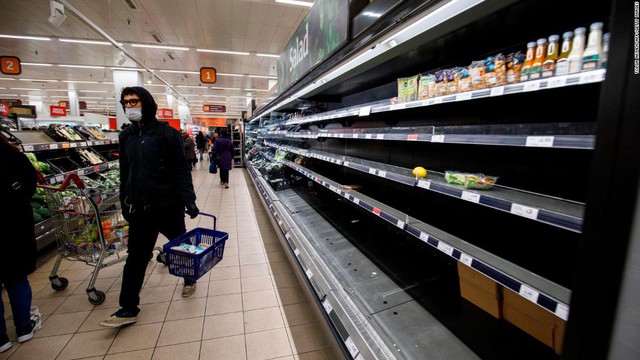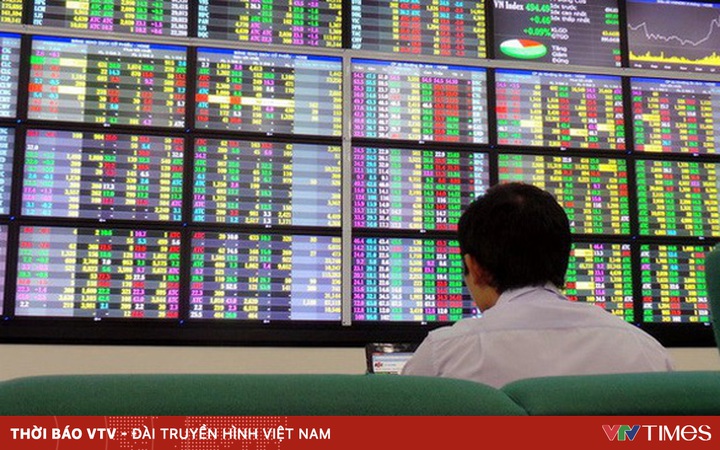Food crisis: “Storm” is approaching
Le Tuyen (Resident of Vietnam Television Station in the US)–Wednesday, April 13, 2022 11:20 GMT+7
If COVID-19 has left impoverished parts of the world with food shortages, the conflict in Ukraine has rattled developed countries, forcing them to rethink the value of investing in agriculture and food security.

Embargoes, import bans, migration crisis, supply chain disruptions, and infrastructure disruptions caused by the conflict in Ukraine have pushed up food prices and the risk of a total shortage. (Artwork – Photo: CNN)
The story of the world of oil shortages seems to be serious, but recently, international organizations continue to warn about a more dangerous risk that is food shortages, if the Russia-Ukraine conflict continues. continue.
According to CNNembargoes, import bans, migration crisis, supply chain disruptions, infrastructure caused by the conflict in Ukraine have pushed up food and food prices and the risk of a total shortage.
According to United Nations data, both Russia and Ukraine account for 6% of global grain production, exporting more than 16% of cereals including wheat, corn, oats and barley. Not only that, the two countries also provide livestock and poultry feed, which indirectly causes the price of chicken and pork to increase.
CNBC furthermore, food crisis will be exacerbated by the lack of fertilizer supply. Currently, Russia accounts for 11% of global urea and 48% of solid nitrogen fertilizers. Along with Belarus, Russia is providing the world with up to 40% of the potassium.
However, these Russian products are prohibited from being exported. In February, a major Belarusian fertilizer producer announced that the contracts were beyond their means.
The scarcity has caused some fertilizers in the North American market to increase more than 2 times in price compared to 2021. While food like in the US, which is already under inflationary pressure, the decrease in supply also increases prices. strong. This is not the first time, however, and many newspapers have raised questions about preparedness for future crises.
CNN says there are a number of measures businesses and governments can take to reduce the impact. For developed countries, it is first and foremost to diversify supply from the domestic market or from markets that are less affected. The second is to open the stockpile to reduce the “thirst” right away. Third, it is necessary to invest more in agricultural production. Finally, reducing food waste, especially in the US. According to the US Department of Agriculture, 30-40% of the country’s food supply is wasted.
As for other regions, scientists suggest a way to reduce the thirst for food and food: rice, but rice is also facing the risk of shortage.
According to Bloomberg, Thailand and Vietnam are producing more rice than they need domestically, but Indonesia and the Philippines lack for their own.
While, according to the researchers, for regions such as sub-Saharan Africa and the Middle East, it is paramount that Southeast Asia produces rice surpluses. It helps reduce price volatility and provides a steady, affordable source of rice.
Two years of COVID-19 caused many difficult areas of the world to fall into severe poverty, but the conflict in Ukraine has left developed countries in a difficult situation when supply is cut. Therefore, it is expected that food can become the focus of discussions of the COP 27 climate conference taking place in November in Egypt, with the hope of reducing global warming and preventing global warming. prevent future hunger.
* Invite readers to watch programs broadcast by Vietnam Television on TV Online and VTVGo!
at Blogtuan.info – Source: vtv.vn – Read the original article here


![[INFOGRAPHIC] Red river urban subdivision planning with an area of 11,000 ha 3 [INFOGRAPHIC] Red river urban subdivision planning with an area of 11,000 ha](https://vtv1.mediacdn.vn/fb_thumb_bn/2022/4/1/quyhoach010422-16487698763841594996969.jpg)
